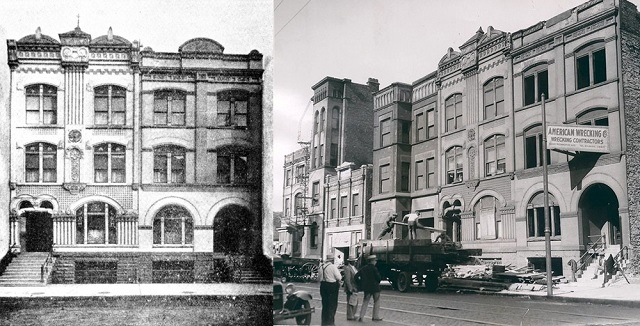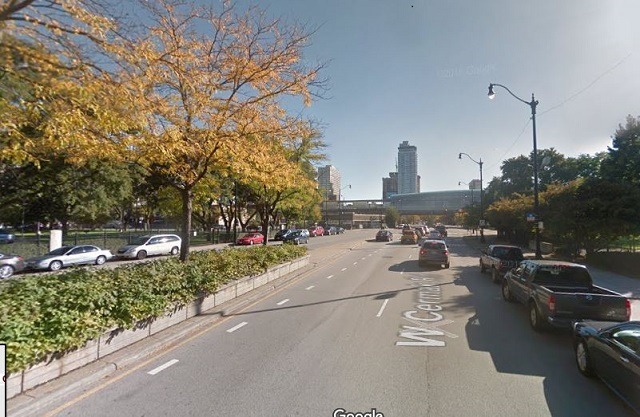From the North American word for wharf, the ‘levee’ district in Chicago is an area around the city’s harbor renowned for being a red-light district. Like many frontier towns, the age-old profession of prostitution went hand in hand with the docks with a ready supply of business and remained a thriving and tolerated part of the city.
Spread across four blocks from 18th to 22nd street, the Levee district was shut down in 1912 following a series of high-profile police raids.
In this brief homage to the old red-light district of Chicago, we take a look at the highs and lows of the Levee District along with the street prostitution scene today in the city.
From the 1880’s to 1912, the Levee District was a hot-bed of prostitution, gambling and racketeering with businesses ranging from prestigious bars and clubs like the infamous Everleigh Club to turf exchanges and rough dives.
The Levee District began to thrive in the 1880s and was home to many brothels, saloons, dance halls, and similar places of an ‘illicit nature’. These businesses ranged from rough dives, like Pony Moore’s or the Turf Exchange Saloon, to prestigious, infamous clubs like The Everleigh Club.
The Everleigh Club was a renowned brothel on the East Coast with a reputation for fastidious cleanliness in both the venue itself and with the girls. Prostitutes working at The Everleigh Club were of a superior quality and were ‘honoured’ to work for the house. Madam, Ada Everleigh, was known for her hands on approach to the housekeeping, often found personally dusting and wiping mirrors between clients.
Not all establishments could offer this kind of five-star service with the lower part of The Levee being known as ‘bed bug row’. Occupying the section between 19th and Archer and Dearborn and Federal this horde of 25 cent brothels was mostly ‘staffed’ by black girls.
Corruption was rife in the district with a large-scale protection racket being operated by corrupt Aldermen John Coughlin and Michael Kenna (The Gray Wolves). Two renowned political Chicago ‘bosses’ of the age, brothel, saloon and dance-hall owners would celebrate them at an annual ball; the First Ward Ball.
The money raised for tickets to this ‘salubrious’ event went towards protecting the businesses in the district from the law. However, anti-vice reformers working alongside the WCTU (Women’s Christian Temperance Union) brought the annual ball to a close in 1908 after years of protestation against the event was finally successful.
The latter institution was also a significant leader in the anti-vice reform that was to eventually see the district face wide-spread closure during the period 1911-1914. With its own ‘department of rescue’ and ‘department of social security’, the WCTU published a journal of stories exposing tales of forced prostitution, white slavery and alcohol misuse which helped to turn the tide of public opinion in their favour.
Temperance Wins and The Levee Closes
Beginning in 1910, the closure of The Levee took a few years before it was successful. Provoked by the death of a prominent public figure, golfer Nathanial Ford Moore, at the famous Everleigh Club brothel, the owner was forced to call the police who shut her establishment down. The death was mooted by some as murder and the accusation alone was enough to force closure.

Notorious brothel, the Everleigh Club, before closure. Image via Chicagology.
Boosted by the fall of a ‘big scalp’, by October 1911, the anti-vice campaigners had gained momentum with the authorities. 135 warrants were issued for prominent Levee District operators. The result was further closures across the four blocks. By 1913, most of the businesses that had once prospered in the Levee District had foundered with the last brothel, Freiberg’s Dance Hall, finally closing its doors, and marking the end of an era, on 24th August 1914.
With the prostitutes leaving vacant buildings owned by often neglectful landlords offering cheap and easy rent, the area was soon populated by Chinese migrants needing low cost accommodation.
Gone? But Not Forgotten
As history constantly serves to reminds us, from Ancient Greece to modern day suburbia, closing down red-light districts does not stop prostitution. An age old profession for which there is a continuous demand, sex work simply moved from the Levee District into new areas of Chicago; most notably, Calumet City and Cicero. Outlawing brothels pushed prostitutes into plying their trade at nightclubs or on the streets. Solicitation was still a big part of the Windy City’s make-up, only now it was made a lot easier without wholesale protection eating into the revenue. Sex workers were still required to pay the law enforcement but it proved substantially easier and cheaper to do this in the suburbs than in the Levee District.
The Levee District: The Return to Splendour?
In the 1970’s, nostalgia and a sense of the retro saw, a return of businesses like peepshows and massage parlours or bars with showgirls to the Levee District. For a while, the public’s appetite for this resurgence seemed to suggest that the Levee District could return like a phoenix from the ashes.
However, as rental prices began to rise in accordance with the Levee’s prime real estate location, businesses were soon squeezed out of the district. Gradually replaced by chain outlets and condominiums, the Levee District today bears no resemblance to the area a century ago.
Sadly, Chicago has no red light district to speak of though street prostitutes continue to be found in abundance across the city; most notably around Garfield Park, Englewood and Streeterville.

The site of the Everleigh Club today looks very different. Image via Google Maps
